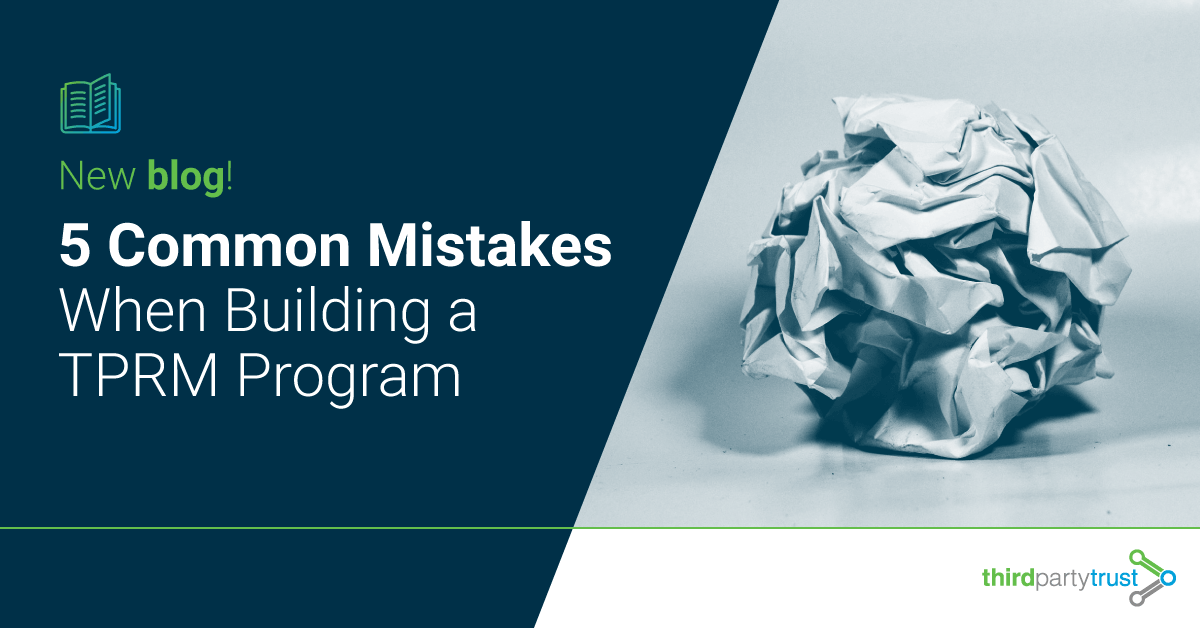5 Common Mistakes When Building a Third-Party Risk Management Program
Managing third-party risk and security in general is a journey, not a destination. When organizations rush to the end goal of performing assessments in the fastest way possible, there are some other aspects that they might oversee. Here are five common mistakes to avoid along with our tips for building the third-party risk management (TPRM) program in a way that best serves your organization.
#1 It’s all or nothing
Many organizations think they have to build a third-party risk management program from scratch (including risk assessment, monitoring and mitigation processes) before they can begin mitigating any risk. So they take time to identify all their third-parties, all the Supplier Relationship Managers within the company, find all the contracts, and focus on having everything perfect before they ever perform an assessment or take any action to mitigate risk. Meanwhile, security gaps have been there all along.
Risks won’t wait until everything is conveniently in order, so it’s better to start with small steps. Perform proper due diligence prior to the onboarding of any new third-party, and then continue to monitor the relationship with them while you build and scale your program. Start with the new, and then go on to address existing third-parties through your new process.
#2 Failure to address risk after having identified it
The purpose of building a TPRM program is to mitigate risk, not to perform assessments. Organizations often build a program where they can perform assessments, but there’s no follow-through with the third-party to close the issues that were uncovered. Therefore, no reduction in risk is achieved.
Remember that the third-party has to be accountable for mitigation of any security issues that arise from this relationship. Perform continuous monitoring of the controls that they have in place to detect new gaps or vulnerabilities.

#3 Lack of incident response
If a security event does occur with a third-party, do you get timely notification? Should an incident happen, you need to be able to take quick action to mitigate the risk and restore operations.
To that end, demand a breach notification procedure upfront and establish effective incident management and response programs, both within your company and with your third-parties.
#4 Not building a relationship with third-parties
You should build a strategic relationship with your third-parties, based on fluent communication and information sharing. This allows both parts to quickly and effectively respond to threats that arise along the way. Also, be proactive in the beginning. Share with them your best practices and ask for the same, so together you can build the most effective security solution.
#5 Forgetting you’re also a third-party to someone else
A company, while it uses third-parties, is many times a third-party to other companies. So whatever your TPRM process is, you have the opportunity to test it out on yourself, to see if you have the proper controls in place, and to be able to demonstrate to your customers that as a third-party you are also mature.
Implement your risk assessment strategy on both sides, sharing your security standards and qualifications with your own customers.
Avoiding these five common mistakes, your third-party risk management program will add value to the organization.
To learn more about how ThirdPartyTrust can help you streamline your TPRM program, request your free trial now:




